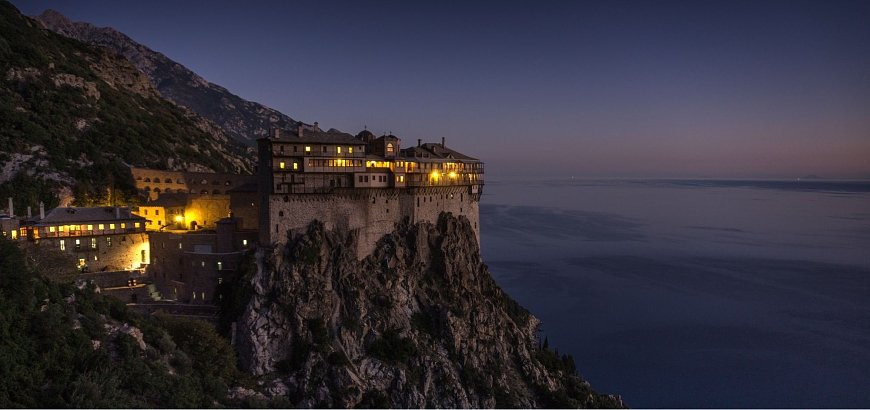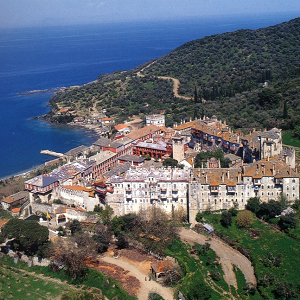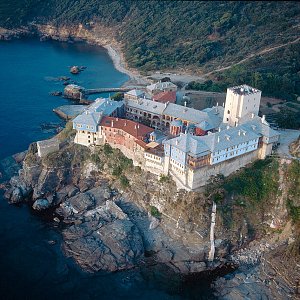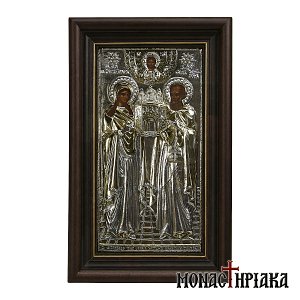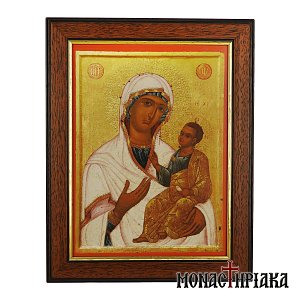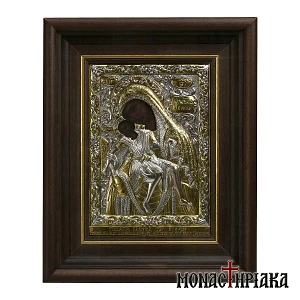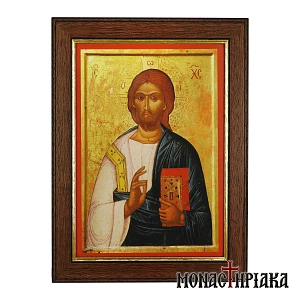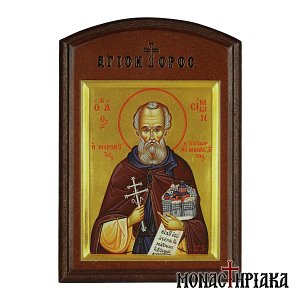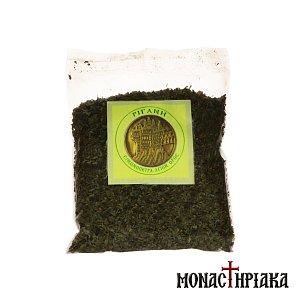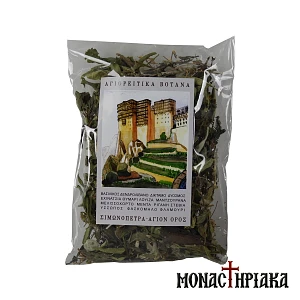One of the most imposing monasteries of Mount Athos, the Holy Monastery of Simonos Petra is built on the edge of a steep granite rock and balances between heaven and earth, in a unique and impressive way. The majestic edifice is defined by a seven-story turreted building, on a large turreted base, it is located at a distance of about 300 m. from the sea and is actually a special example of bold Byzantine engineering.
The historical life of the Holy Patriarchal Monastery of Simonopetra has a continuous course of approximately eight centuries, which ranks it in the 13th hierarchical position among the 20 monasteries of Mount Athos.
Where is the Holy Monastery of Simonos Petra and how is it accessed?
The Holy Monastery of Simonopetra is the first Monastery that we come across after the port of Dafni, following the route to the south. In order for a pilgrim to visit the Monastery, he will have to follow the dirt road approximately 10 km long from Dafni, or he will have to reach the site of the Monastery by boat.
If a pilgrim comes from the Holy Monastery of Gregory, which is next to Simonopetra, then he follows the dirt road by car for about 2.5 km, or he takes the boat again. From the moment one arrives at the monastery ramparts, it follows an uphill path of half an hour to the entrance of the monastery.
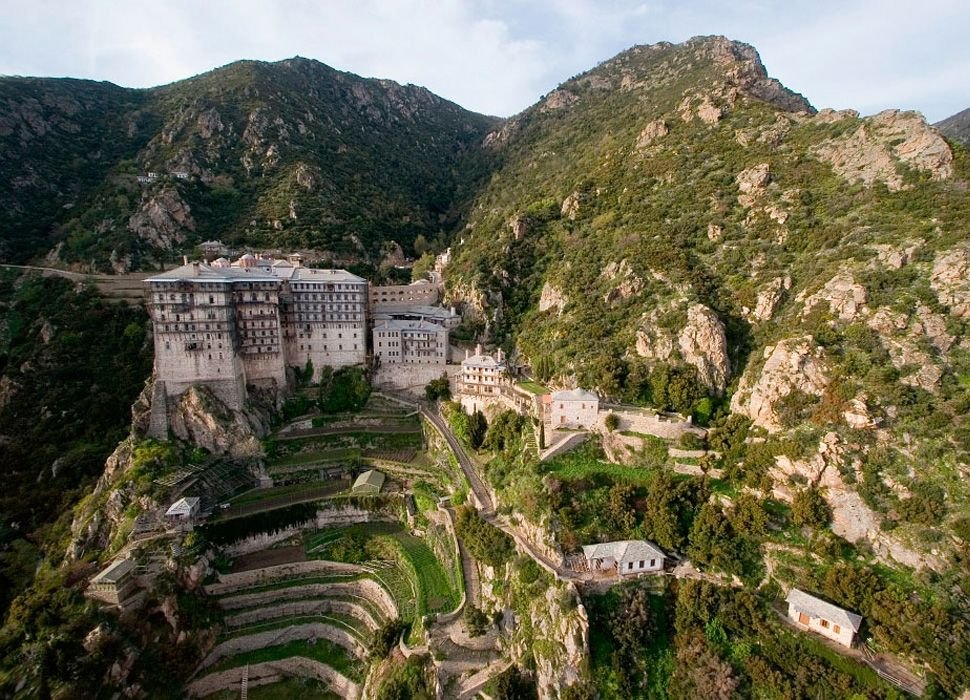
Where did Simonopetra get its name from and who is the founder of the Monastery
The vision that Saint Simon saw with the Virgin Mary
Saint Simon the Myrovlites was the founder of the Holy Monastery of Simonopetra in 1254 AD, after a vision he saw with the Virgin Mary. Saint Simon lived ascetic life in a cave located near the place where the monastery was later built, praying constantly. In the period just before Christmas, Saint Simon saw the same vision for many nights: a star standing out from the sky and standing on the opposite rock, at the place where the monastery is today built "as if a star was seen from the sky, and stood on the opposite rock, where the venerable Monastery is now built".
On the night of Christmas, Saint Simon felt as if he was in Bethlehem of Judea and saw the Lord in the manger swaddled "it seemed to him that he was found in Bethlehem of Judea as if he saw... our Lord lying in the manger". At the same time, suddenly, he heard a heavenly divine voice commanding him to build on the rock that bathed in the starlight "star composite light", the New Bethlehem, i.e. today's Simonopetra.
Saint Simon heard the following words three times and made the decision to build the Holy Monastery, which he initially called New Bethlehem.
"here you must establish, O Simon, your community and save souls, and be careful; do not disbelieve, as before, I want to be your helper; look, do not doubt, so that you do not suffer any harm"
Indeed, then, Saint Simon built the Monastery, gave it the name Nea Bethlehem and dedicated its Church to the name of the Nativity of the Lord in the flesh. Some years later, on December 28, 1257, when Saint Simon had already reached a great age, he fell asleep peacefully. After his death, the Monastery was renamed Simonopetra, in honor of the Saint.
Thus, the prophecy of the Virgin Mary, who prevented him from leaving this place, is verified, telling him: "I will glorify this place with your name".
The action of the new founder of Simonopetra, Serbian abbot John Ouglesis 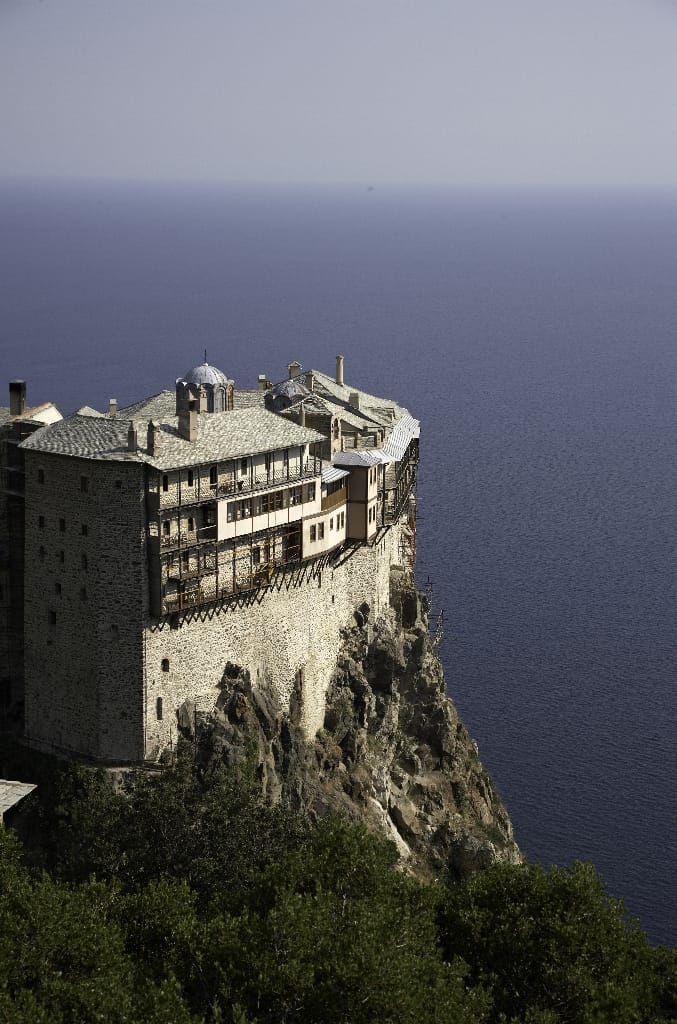
In the period 1365-1371 AD the Holy Monastery of Simonopetra is in a new period of prosperity, during which the Serbian John Ouglesis, despot of Serres, acts and benefits as the new founder.
According to tradition, a relative of the despot, perhaps his son, was miraculously cured and John Ouglesis asked to enlarge the small Monastery, making donations and dedications. This wealth enabled the renovation of Simonopetra, equipping it with a new rampart, towers, cells and other ancillary buildings. In addition, the central temple of the monastery was enriched with sacred relics, icons, books and rich utensils.
Thanks to the important donations of the abbot John Ouglesis, Simonopetra experienced great days of prosperity, as a result of which he is remembered as the founder of the Monastery.
The King Joasaph in Simonopetra
At that time, King Joasaph was also in Simonopetra, following an ascetic life and without revealing his noble origin. In fact, Joasaph is one of the first saints of the Monastery and is depicted in the icon of the church with the inscription "Holy Joasaph, son of the king and builder, in the same Monastery as an ascetic".
The memory of Saint Joasaph is commemorated together with the memory of the first founder Saint Simon, on December 28.
The fires that destroyed Simonopetra
The first catastrophic lightning fire
On December 11, 1580, lightning struck the Holy Monastery of Simonopetra and caused a large and devastating fire. The walls of the Monastery, the cells, the books, the chrysobul and other important relics were completely destroyed. Most of the monks managed to save themselves by descending with ropes from the walls to the cliff, but unfortunately some fathers met a martyr's death.
The following years in Simonopetra after the fire
In 1782, Dionysios Papadatos from Zakynthos was appointed abbot of the Monastery, who endowed Simonopetra with holy relics, including the hand of Saint Dionysios of Zakynthos.
In 1861 Neophytos Molakas (1828-1907), from Alatsata in Asia Minor, was elected abbot of the monastery. In 1888 abbot Neophytos received permission to make a fundraising tour in Russia, accompanied by hieromonk Dionysios and deacon Ioannikios.
The fathers started their tour having in their luggage the sacred palladium of the Monastery, the imperishable and sacred relic of the holy apostle and ointment-bearing Mary Magdalene. The tour lasted four years, performing supplications and consecrations before the holy relics, in every city, from European Russia, Petersburg, Moscow and Kiev to Kazan, Samara and Astrakhan on the Caspian.
The third devastating fire in Simonopetra 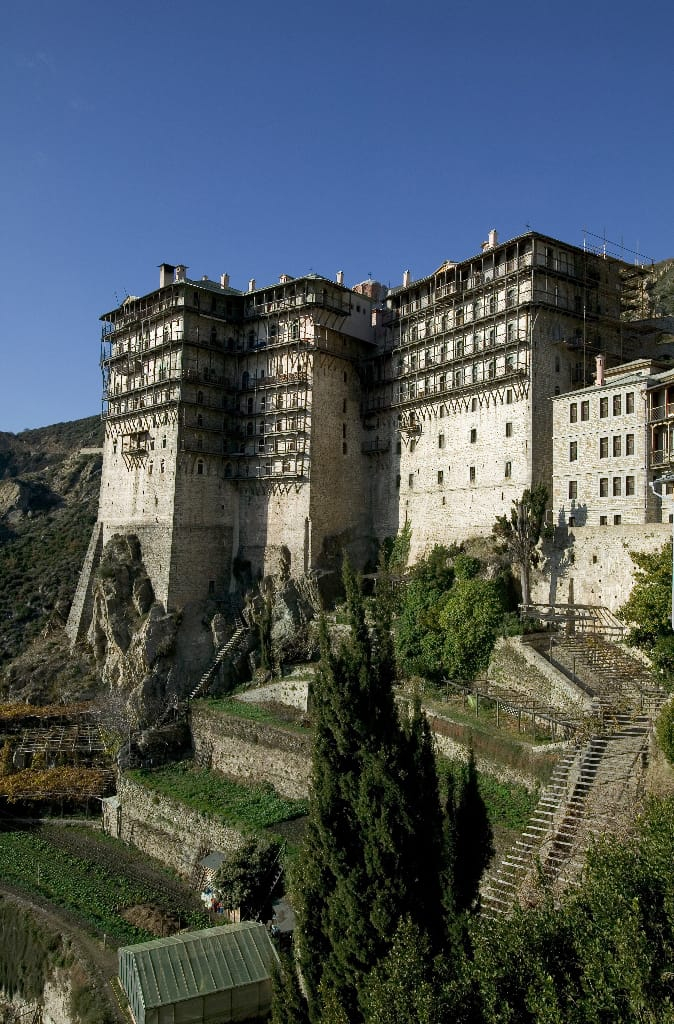
As the fathers' tour drew to a close, another devastating fire engulfed Simonopetra in flames. This time, the fire started from the oven of the Monastery and soon spread to the east side, which it burned to the ground.
On that night, May 28, 1891 dawned, giving Simonopetra deep wounds and ruins once more. The east side, the courtyard and the Temple were burnt down, destroying manuals, frescoes, relics, precious manuscripts and great works of the library. Also, the bank, the mansion, several cells and four chapels were completely burned, leaving behind only ashes. To the comfort of the monks, the sacristy with all the relics, documents, holy relics and vestments were left intact.
After four years in foreign places, Abbot Neophytos returned to Simonopetra and found the Monastery in a tragic state. All the efforts to renovate the monastery were wasted after the fire. This dramatic situation brought the idea of building the Monastery in a new location, but the abbot decided not to abandon the place, due to the historicity, but also the respect for the person of Saint Simon.
Immediately, therefore, the work to renovate the Monastery began again and by 1893 most of the monastery was completed. However, instead of restoring the damaged eastern side, Abbot Neophytos decided to build from the ground up a new multi-storey wing, dedicated to Saint Mary Magdalene.
The resignation of abbot Neophytos and the new abbot Ioannikios
A few years after the completion of the renovation, in March 1906, Abbot Neophytos submitted his resignation from the administration of the Monastery, after forty-five years of hegemony. The advanced age of the elder Neophytos, the toils and sufferings, combined with the strain on his eyesight, were the main reasons that led him to resign.
Hieromonk Ioannikios Vardalas took over the reins, who was a companion of Neophytos on the tour to Russia and worked tirelessly alongside the abbot to save the Monastery. Elder Neophytos fell asleep a year later, on the eve of Akathistos in 1907, leaving behind the monastery in its heyday with about seventy monks, most of whom came from Asia Minor.
Simonopetra after the Liberation of Mount Athos from the Turks
On November 2, 1912, Mount Athos is freed from the Turkish yoke, with the intervention of the Greek fleet with the battleship "Averof". A few years later, in 1919 and at the age of only 52, abbot Ioannikios died, giving his position to abbot Ieronymos, an important monk for the course of the Monastery.
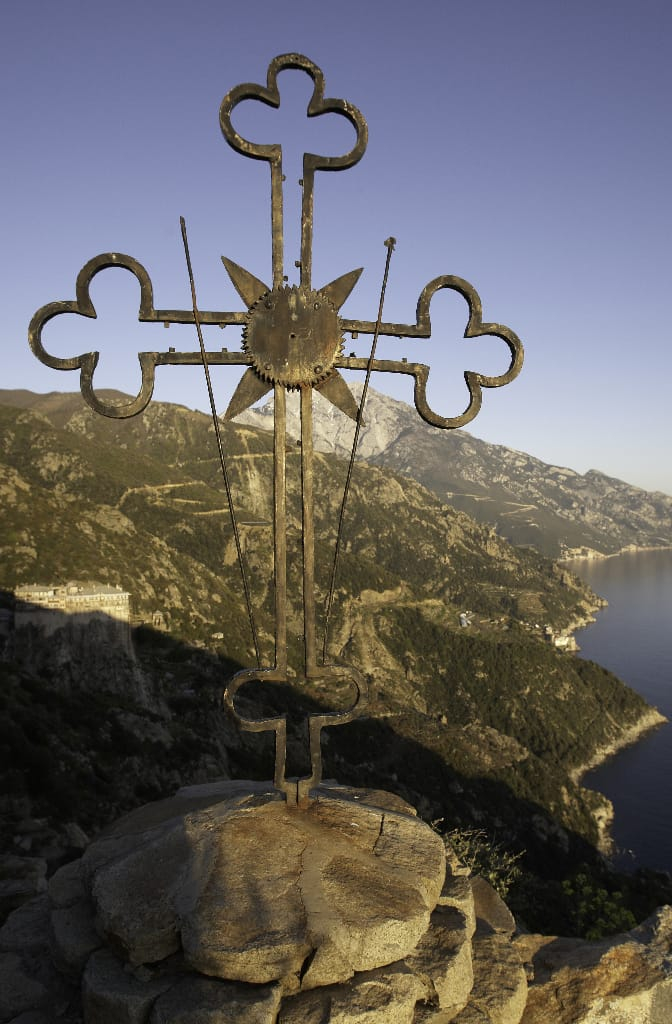 However, the issue of changing the calendar divided the Monastery and led to the eviction of the elder Hieronymos. After 43 years of uninterrupted activity in Simonopetra, Ieronymos was transferred in 1931 as a spiritual person to the Holy Temple of the Ascension in Athens, a temple which is part of Simonopetra.
However, the issue of changing the calendar divided the Monastery and led to the eviction of the elder Hieronymos. After 43 years of uninterrupted activity in Simonopetra, Ieronymos was transferred in 1931 as a spiritual person to the Holy Temple of the Ascension in Athens, a temple which is part of Simonopetra.
Elder Hieronymus died on January 7, 1957, but his tomb in the Ascension stake remained empty. The holy relics of the abbot of Simonopetra returned to the homeland, in Simonopetra, and were left as a legacy for the course of the Monastery.
Simonopetra during the German Occupation
During the years of the German occupation, the entire Mount Athos suffered, facing many problems, among which lack of monks. This lack created the need for an external spiritual, who would confess the fathers. At that time, Simonopetra had the blessing of hosting Fr. Gelasios, who acted as arsanari, despite the dangers that this position entailed. Among other things, elder Gelasios had the luck and blessing to transport elder Sophronio in his boat from the caves of Saint Paul, where he was an ascetic, to confess the fathers. Father Sophronios is none other than the later founder of the Holy Monastery of Saint John of Essex.
A new period of prosperity for Simonopetra
In September 1973, under the spiritual guidance of Archibishop Emilianos, a brotherhood of monks settles in Simonopetra, who until recently lived in the Holy Transfiguration Monastery of Meteora and were looking for a quieter place for prayer and exercise. Father Emilianos undertook the reorganization and care of the new monks, creating a strong community with devotion and respect for the monastic tradition.
Respecting the Standard of the Church and with the proper cultivation of the youthful enthusiasm that possessed the brotherhood, Father Emilianos managed to restore Simonopetra to a prosperous period. In 1995, the health of the elder Emilianos is shaken and he is forced to leave Mount Athos.
When does the Holy Monastery of Simonopetra celebrate?
The Holy Monastery of Simonopetra celebrates three times a year, according to the old calendar, like all the monasteries of Mount Athos: on December 25, the Birth of Jesus Christ, on December 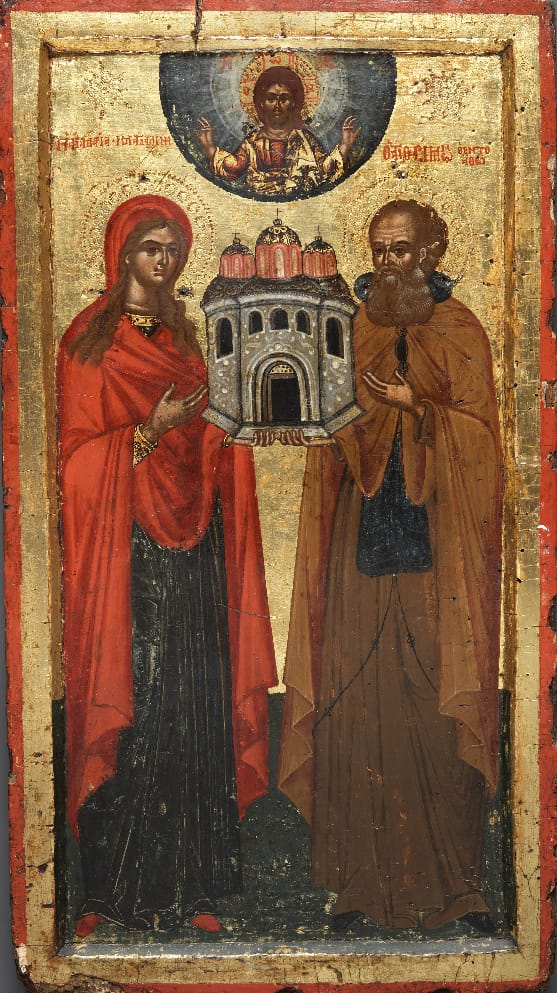 28, the feast of Saint Simon the founder, and on July 22, the feast of Saint Mary Magdalene.
28, the feast of Saint Simon the founder, and on July 22, the feast of Saint Mary Magdalene.
It is important to mention that the left hand of Saint Mary Magdalene and Myroforos has been kept in the sacristy of the Holy Monastery of Simonopetra for 2,000 years. Saint Mary Magdalene is honored as the co-founder of Simonopetra.
Properties - benefices "metochia" of the Holy Monastery of Simonopetra
The Holy Monastery of Simonos Petra owns many metochia, both in Greece and in France: the Metochi of Saint Charalambos in Thessaloniki, the Metochi of the Ascension of the Lord in Byron Attica, the Metochi of Saints Artemis and Antipa in Sifnos, the Metochi of Panagia of Trygis in Propuli Limnos, with the miraculous icon of the Virgin Mary, the Metochi of the Annunciation in Ormylia, Halkidiki, the Holy Sanctuary of Saint Nicodemus in Pentalofos Goumenissa, where the icon of the Virgin Mary of Asia Minor from the Iconium of Asia Minor is kept. In France, he has the Metochion of Saint Anthony, south of the city of Lyon, the Metochion of Agia Skepi in Solan, in the south of France and the Metochion of the Transfiguration of the Savior in central France, in the Terasson region south of the city of Limoges.
The Library and the relics of the Simonopetra Monastery
After the fire that burned down the Library of the Monastery, today only 42 parchments from the 10th and 14th centuries, as well as 210 paper codices from the 14th and 19th centuries, survive.
The relics of the Monastery include many relics of Saints, such as Saint Paul the Patriarch of Constantinople, Saint Kirikos, Saint Dionysios the Areopagite and Saint Sergius the martyr. Perhaps the most important relic is considered to be the left hand of Saint Mary Magdalene.
Contact with Holy Monastery of Simonopetra:
Phone: +30 23770 23254, +30 23750 94098
Email: [email protected]
